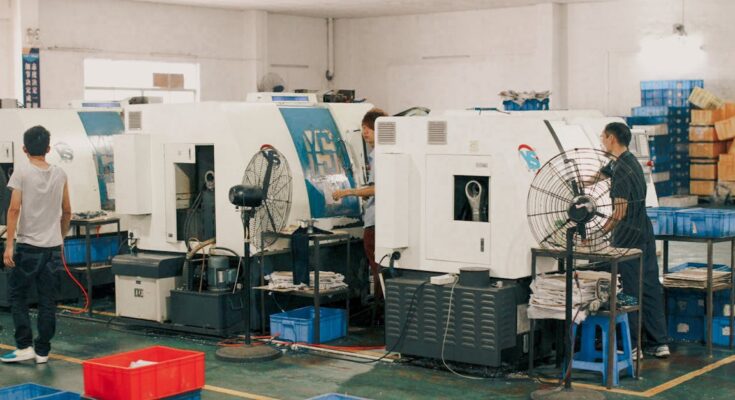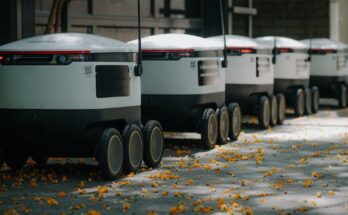Ever feel like your computer is more of a chore than a tool? Like you’re stuck doing the same boring, repetitive tasks over and over? If you’re a professional juggling lots of digital busywork – copying data from emails, filling out endless online forms, pulling numbers for reports – you know the drill. It eats up your time and brainpower. But what if you could teach a virtual helper, a sort of software robot, to handle all that tedious clicking, typing, and copying for you? That’s exactly what we’re diving into. We’ll explore how Robotic Process Automation (RPA) works, why it’s a big deal for getting your time back, and what kind of digital grunt work it can handle. Get ready to see how you can offload the boring stuff and focus on the work that actually matters.
What’s RPA Anyway? Your Digital Sidekick Explained
Okay, so RPA sounds fancy, right? Robotic Process Automation. But really, think of it like giving your computer a set of super specific instructions for a particular job, like a recipe. Instead of you doing the steps – click here, type this, copy that, paste there – you train a “software robot” to do it. This robot isn’t a physical thing with arms and legs; it lives inside your computer. It mimics exactly what a human user would do on a screen, following rules you give it. It interacts with software programs just like you do, whether it’s email, spreadsheets, websites, or your company’s internal tools.
Why Those Repetitive Tasks Are Such a Pain
We all have those tasks, right? The ones that make you sigh before you even start. Maybe it’s pulling data from a PDF document and typing it into a spreadsheet, over and over. Or perhaps it’s logging into a website, downloading a report, and then emailing it out every single day. Doing this stuff manually is soul-crushing! It’s boring, yes, but worse, it’s super easy to make mistakes. Typos happen. You copy the wrong cell. You send the report to the wrong person. These errors cost time and can cause bigger problems down the line. Plus, think about all the time you spend on this low-value work instead of tackling creative problems or connecting with people.
How the RPA Robot Gets the Job Done
So, how does this software robot actually *do* the work? It’s pretty neat. The RPA tool basically watches you perform the task once or you build the steps for it. Then, it can repeat those exact steps anytime you tell it to. It *sees* the user interface of applications, identifies fields to type in, buttons to click, and menus to navigate. It can copy text from one place and paste it into another, open applications, close them, manage files and folders. It’s like having a super-fast, perfectly obedient digital assistant that only knows how to do that one specific, repetitive task you taught it. And it can do it 24/7 without getting tired or making typos.
Where RPA Can Jump In and Help Out
Think about your day. What are the things you do that are exactly the same every time? Those are prime candidates for RPA. Let’s picture a common scenario, just for fun. Say you work in customer service, and every time a new customer signs up online, you have to copy their info from the signup system and create a new entry in three other internal systems. Manually, that’s copy, paste, click, type, copy, paste, click, type… you get the idea. With RPA, you could build a robot that automatically detects a new signup and performs all those steps across the systems for you, instantly and accurately. Other places RPA shines are things like generating simple invoices, checking data consistency between different spreadsheets, or processing forms with predictable layouts.
It’s Not Sci-Fi Magic (And What It Can’t Do)
While RPA is awesome for repetitive digital chores, it’s not a fix-all superhero for everything. It’s best suited for tasks that are rules-based – meaning the steps are always the same or follow clear, predictable logic. If a task requires human judgment, creative thinking, or dealing with messy, unstructured information (like trying to understand a handwritten note or having a complex conversation), RPA isn’t the right tool. Also, if the software programs it interacts with change their look or layout often, the robot might get confused and need to be retrained. So, it’s fantastic for those predictable, high-volume, low-variation tasks, but don’t expect it to write your next marketing campaign or negotiate a contract!
Taking the First Step Towards Automation
Thinking RPA might be for you? A good way to start is by simply noticing the tasks you dread or find yourself doing on autopilot. Which digital jobs feel like you’re just a human copy-and-paste machine? Pick just one simple, repetitive task that takes up a surprising amount of your week. Then, you can start looking into accessible RPA tools that let you build these simple robots. Many are designed to be pretty user-friendly, letting you “record” your actions like you’re teaching the computer. Starting small helps you see the power firsthand and understand how it works before tackling bigger processes.
So, that’s the lowdown on automating workflows with RPA tools. At its core, it’s about using software robots to take over those mind-numbing, repetitive computer tasks that eat away at your day and introduce annoying errors. We talked about how it mimics human actions on the screen, why it’s a game-changer for freeing up your time, and gave some examples of where it fits in. Remember, it’s best for those predictable, rules-based digital chores, not complex decision-making. By letting RPA handle the digital busywork, you reclaim valuable time and reduce mistakes, leaving you free to focus on the more interesting, important parts of your job that actually need your human touch. Think of all you could do with that time back!




